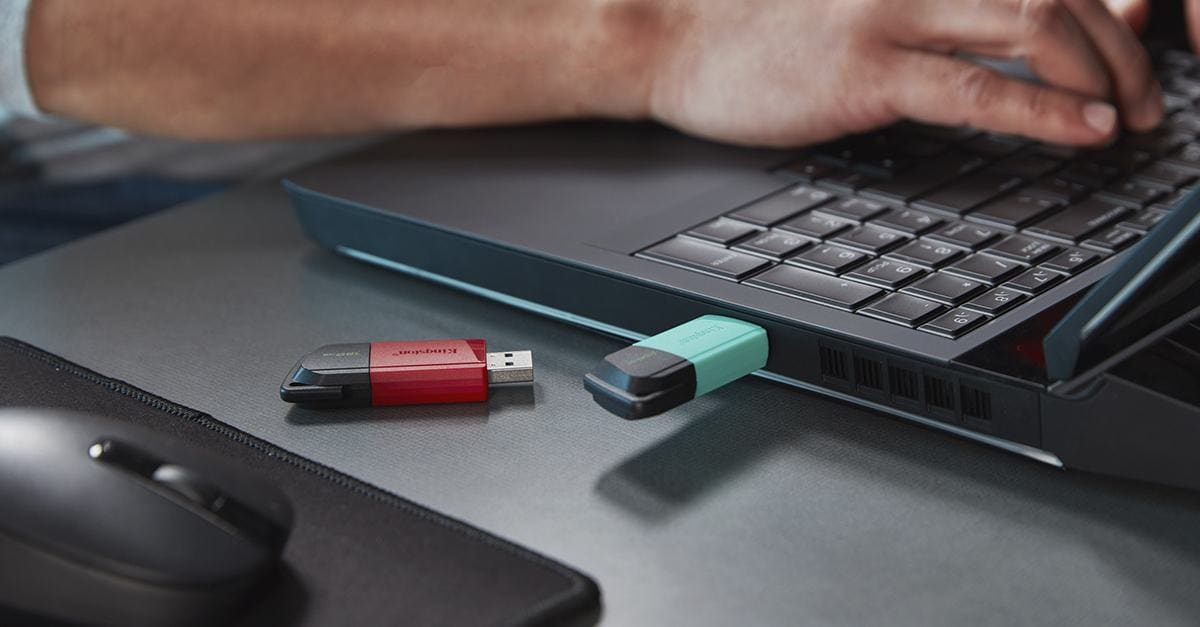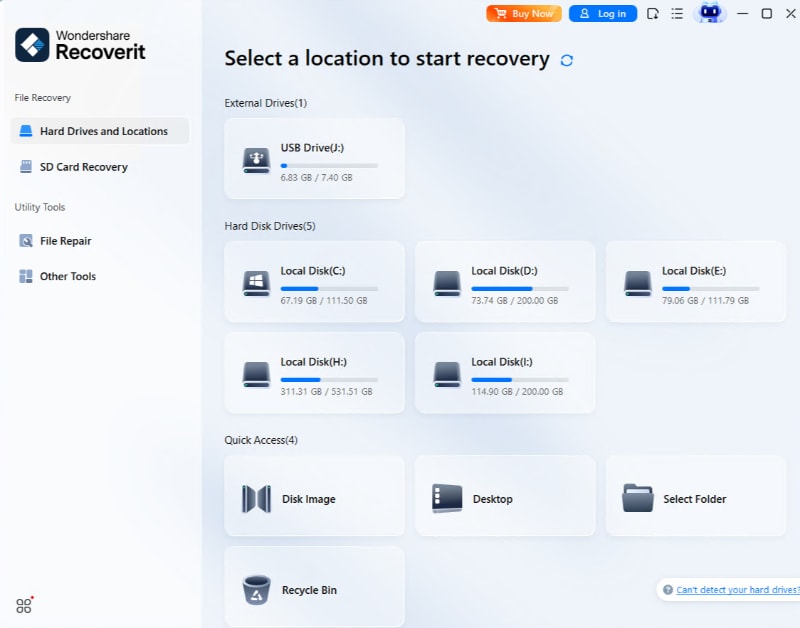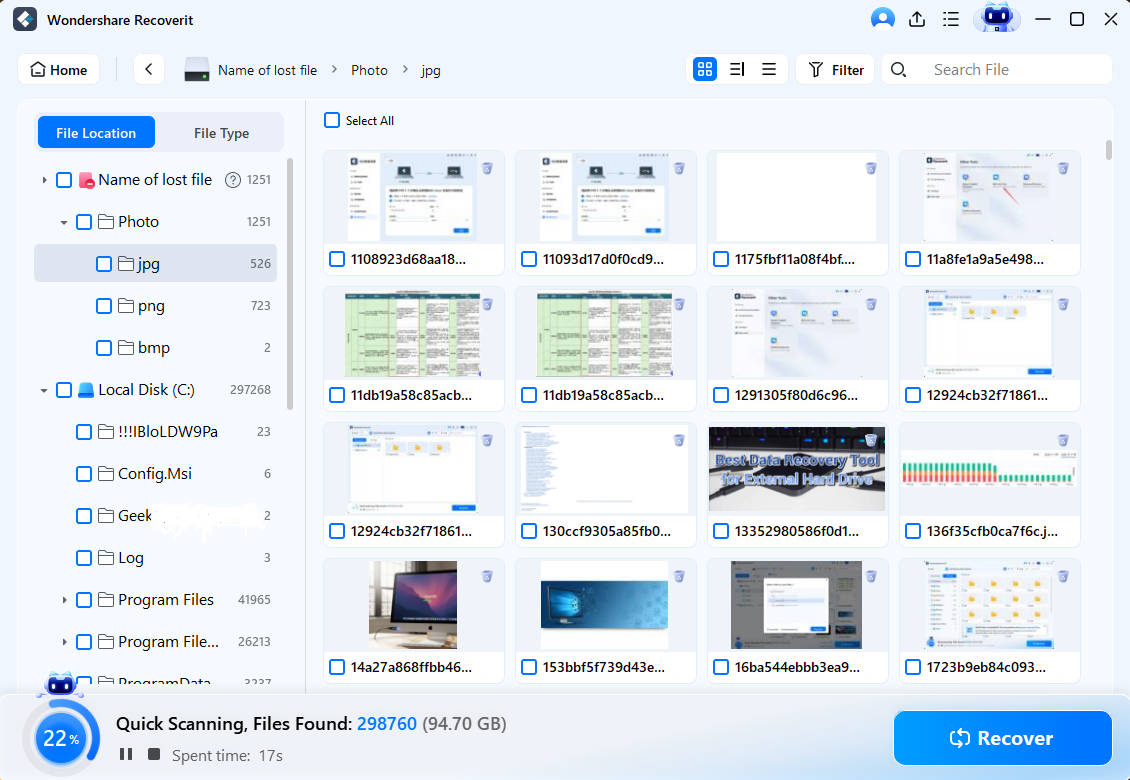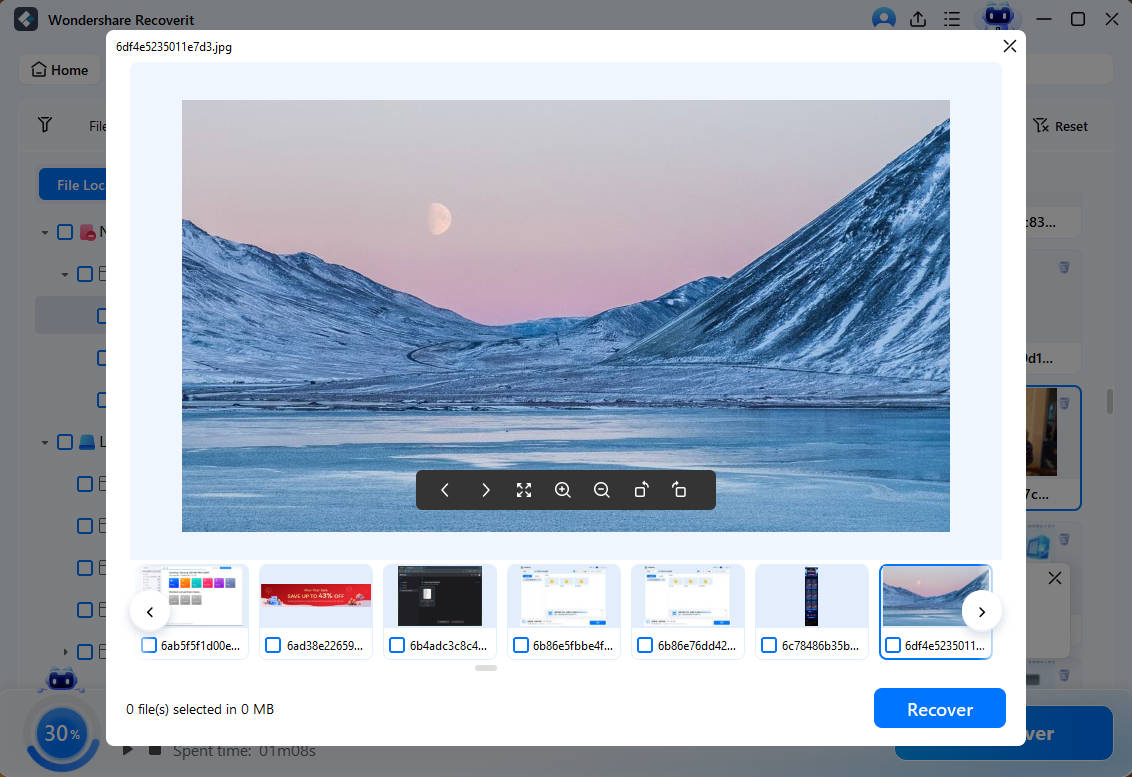Have you ever experienced the feeling when you plug in your USB flash drive, and it won’t read? It can be incredibly frustrating, especially when important files are at risk. Wondering how to recover data from unreadable USB flash drive? Whether your USB is corrupted or unreadable, our guide will help you recover your data and fix common issues.
Life is full of moments where technology can fail us. With USB flash drives being a common tool for storing essential data, it’s crucial to know the steps to retrieve your data when things go wrong. This article provides a straightforward approach to making your USB flash drive readable again, whether you're on a Mac or Windows system.

Don’t let a corrupted or unreadable USB flash drive cause unnecessary stress. By following our comprehensive guide, you’ll learn how to recover fix unreadable USB flash drive. Let’s dive into the step-by-step solutions that will get your USB back in working order.
Try Recoverit to Recover Unreadable USB
Security Verified. Over 7,302,189 people have downloaded it.
In this article
Part 1: Can I Recover Data From Corrupted USB Flash Drive?
Absolutely, yes! You can recover data from a corrupted USB flash drive. Many tools and methods are available to assist in this task. Even if your USB flash drive appears unreadable, the data is often still there. Using specialized recovery software can help you retrieve your files effectively.
Following careful steps is crucial to avoid further damage and ensure you don’t lose any more data.
Part 2: Common Causes: Fix Flash Drive That Won't Read
Understanding the common causes behind a USB flash drive that won't read can help you prevent and fix the issue effectively. Here are some frequently encountered reasons:
- Physical Damage to the USB Port or Drive: Physical damage can prevent proper connections.
- Corrupted or Missing File Systems: Corrupted or missing files can make the drive unreadable.
- Power Losses During Data Transfer: Abrupt power losses can cause data corruption.
- Malware or Virus Infections: Harmful software can corrupt the drive, making it unreadable.
- Outdated or Corrupt USB Drivers: Outdated or corrupt drivers can stop your computer from recognizing the drive.
- Improper Removal of the USB Device: Not safely ejecting the drive can cause data corruption.
- Faulty USB Cables or Connectors: Damaged cables or connectors can hinder your connection.
- Logical Errors in the USB Drive's File System: Logical errors can prevent the drive from being recognized.
Identifying these common causes can help you fix an unreadable USB flash drive and prevent future issues.
Related Video >>: How to Fix Corrupted USB and Recover Data?
Part 3: How To Recover Data From Unreadable USB Flash Drive: Recoverit Data Recovery Tool
Recoverit Data Recovery Tool is a reliable solution for recovering lost data from a corrupted or unreadable USB flash drive. It supports various file formats and is user-friendly. Whether you’ve lost photos, videos, documents, or other types of files, Recoverit can help retrieve them efficiently.
This tool is designed to be straightforward and accessible. Its interface is intuitive, guiding you step-by-step through the data recovery process. It offers a preview function to see the recoverable files before proceeding with the recovery.
This allows you to select only the necessary files, making the process more efficient and less time-consuming.
Here are the steps:
- Download and install the Recoverit Data Recovery Tool on your computer (Windows or Mac). Launch the program, and select the USB flash drive. Click on the Start button.

- Wait for the scanning process.

- Preview the files. Select the ones you need. Click Recover. Save the recovered files.

Related Video >>: How to Recover Deleted Files from USB?
Part 4: How To Fix Error "The Disk You Inserted Was Not Readable By This Computer" On Mac
Encountering the error "The Disk You Inserted Was Not Readable By This Computer" on your Mac can be alarming. However, it’s a common issue and usually fixable. This error often signifies a problem with the USB port, the connection, or the drive’s data.
Below are some easy steps to troubleshoot how to fix unreadable USB flash drive on Mac.
Fix 1: Check USB Ports And Connections
One of the simplest ways to fix this error is by checking your USB ports and connections. Often, a faulty or loose connection can cause the device to be unreadable. Here’s what you can do:
- Connect your USB flash drive to various USB ports. Verify that the USB cable and ports are intact and securely connected.

- Try using another computer to check if the issue persists.
Fix 2: Reset NVRAM/PRAM
Resetting the NVRAM/PRAM on your Mac can sometimes resolve this error. NVRAM/PRAM stores settings related to your USB devices, and resetting it can help clear out any conflicts.
Here’s how to fix error "the disk you inserted was not readable by this computer" on Mac:
- Shut down your Mac. Turn it back on while pressing Option + Command + P + R keys.

- Press and hold the keys for around 20 seconds, and release them when your Mac restarts.
Fix 3: Use Disk Utility (First Aid)
Using Disk Utility’s First Aid feature is another effective method to fix this error. First Aid can help repair the disk and resolve issues causing the unreadable error. Here’s how you can use it:
- Open Disk Utility. Head to Applications > Utilities > Disk Utility. Select the USB flash drive.

- Click on First Aid and run the repair process.
Part 5: How To Fix Unreadable USB Flash Drive On Windows
Several methods can help resolve unreadable USB flash drives on Windows. Often, switching USB ports or running specific commands can fix the issue. Here are some steps you can take:
Fix 1: Switch To Another USB Port
One of the simplest solutions is switching your USB flash drive to another USB port. Sometimes, the issue can be with the port rather than the drive. Here’s what you can try:
- Connect your USB flash drive to different USB ports.

- Ensure the port is functioning correctly by testing with another device.
Fix 2: Run The Chkdsk Command
Running the Chkdsk command can help identify and fix errors on your disk. This powerful command scans and fixes logical errors on the USB drive:
- Press Windows + R keys to open the Run dialog. Type 'cmd' and press Enter.

- In the Command Prompt, type 'chkdsk [drive letter]: /f' and press Enter.
Fix 3: Reinstall USB Drivers
If the USB flash drive remains unreadable, reinstalling the USB drivers might help. Here's how you can do it:
- Press the Windows + X keys and select Device Manager. Expand the Universal Serial Bus controllers section. Right-click on the USB driver and select Uninstall device.

- Restart your computer to reinstall the drivers automatically.
Part 6: Pro Tips To Prevent Flash Drive That Won't Read
Keeping your USB flash drive in good condition and ensuring it doesn't become unreadable requires a few key maintenance practices. These tips can help prevent potential issues and prolong the life of your USB flash drive. Let's take a look at some of the best practices:
- Always Eject Your USB Drive Safely: Before removing your USB flash drive from your computer, always use the 'Safely Remove Hardware' option. This helps ensure that all read/write operations are completed, preventing data corruption.
- Regularly Update Your USB Drivers: Your computer's USB drivers need to be updated to ensure proper communication between the USB flash drive and your system. Check for the latest driver updates regularly.
- Ensure Your USB Ports Are Not Dusty or Damaged: Dusty ports can hinder proper connections. Regularly clean your USB ports using a dry, soft brush or compressed air. Also, be careful not to damage the ports during cleaning.
- Use Reliable Antivirus Software: Malware and viruses can corrupt your USB flash drive. Use reputable antivirus software to scan your USB flash drive and keep your computer safe from threats.
- Backup Crucial Data Frequently: Regularly back up your important data to another storage device or cloud storage. This practice ensures that you have a copy of your data in case your USB flash drive fails.
- Avoid Using Your USB Drive Under Low Battery Conditions: Using your USB flash drive when your computer or device has a low battery can lead to power loss during data transfer, which can cause corruption.
- Test Your USB Drive On Multiple Devices: If your USB flash drive isn't working on one device, test it on another device. This can help determine if the issue lies with the USB flash drive or the computer.
- Use Reputable USB Drive Brands: Opt for USB flash drives from reputable brands known for quality and reliability. Cheaper, no-name brands might be more prone to failure and data loss.
By incorporating these pro tips into your routine, you can significantly reduce the risk of your USB flash drive becoming unreadable and ensure the safety of your data.

Conclusion
In conclusion, it is possible to recover data from a corrupted or unreadable USB flash drive. Understanding the common causes can help prevent future issues. Using tools like Recoverit Data Recovery Tool can simplify the recovery process. By following the outlined steps, you can fix errors on both Mac and Windows systems.
With proper care and maintenance, you can extend the life of your USB flash drive and ensure the safety of your data.
Try Recoverit to Retrieve Lost Data from USB
Security Verified. Over 7,302,189 people have downloaded it.
FAQ
-
1. Can I recover data from a corrupted USB flash drive on my own?
Yes, you can recover data from a corrupted USB flash drive on your own using recovery software like Recoverit. These tools are designed to help you retrieve lost or inaccessible files by scanning the drive for recoverable data. Follow the software’s instructions carefully to maximize your chances of a successful recovery without causing further damage to the drive. -
2. How can I prevent my USB flash drive from becoming unreadable?
To prevent your USB flash drive from becoming unreadable, always use the 'Safely Remove Hardware' option before disconnecting it from your computer. Keep your USB ports clean and free of dust, regularly update your USB drivers, and use reliable antivirus software to protect against malware. Additionally, avoid using your USB drive during power fluctuations and back up your important data frequently to minimize the risk of data loss. -
3. What is the most common cause of a flash drive not being readable?
The most common cause of a flash drive not being readable is improper ejection or removal from a computer. When a USB flash drive is removed without following the 'Safely Remove Hardware' procedure, it can lead to data corruption or damage to the file system. Other common causes include physical damage, outdated or corrupt drivers, and malware infections.


 ChatGPT
ChatGPT
 Perplexity
Perplexity
 Google AI Mode
Google AI Mode
 Grok
Grok























